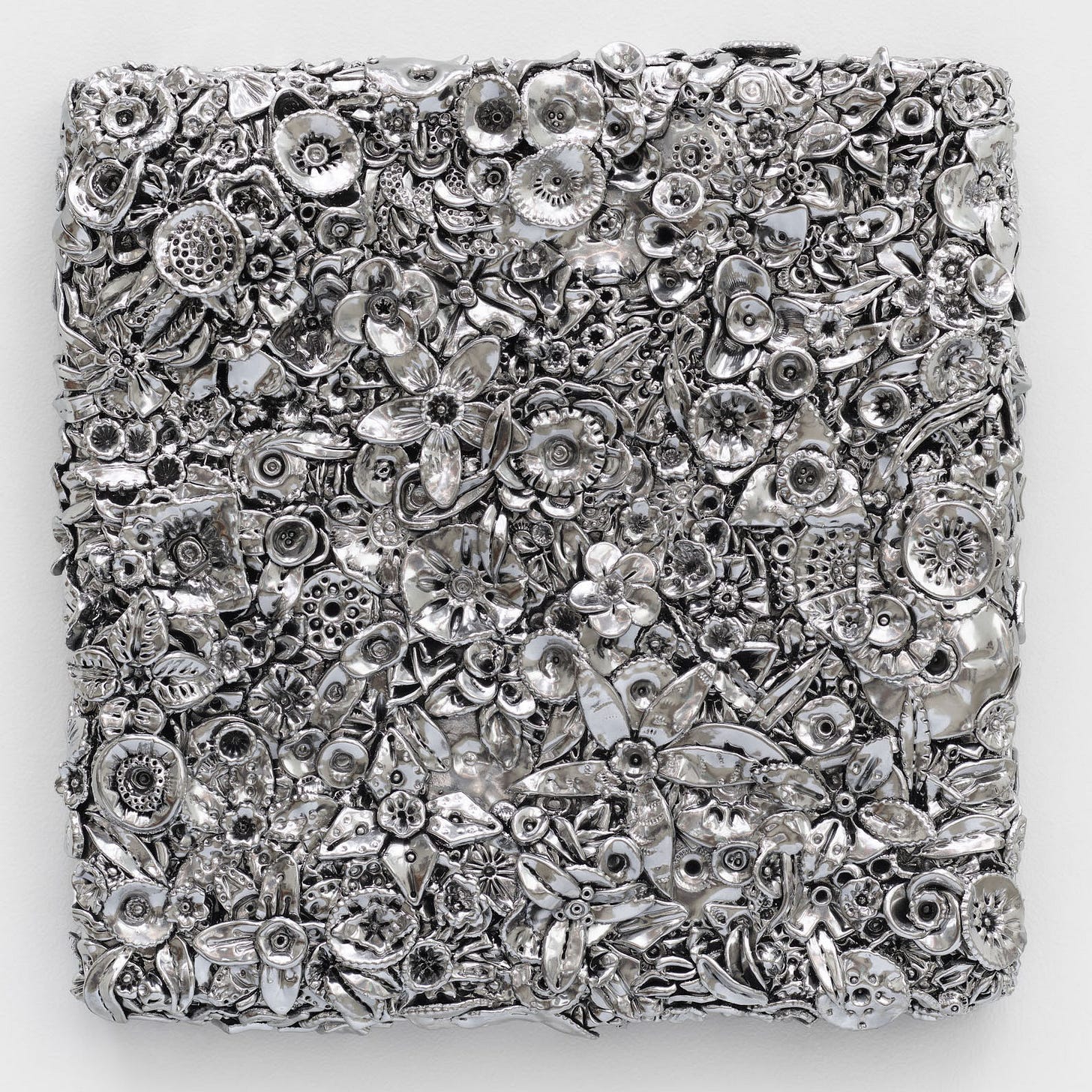
My friends, I did not get to Arrival Art Fair this weekend. Other commitments got in the way, and I seem to have picked up a virus. So I’m home, sad that I can’t be there. Did you go? What did you like about it? What did you see? What was the best part?
It’s been a busy Globe week, so today I’ll just be filling you in on my adventures there. I spoke with Arrival co-founders Yng-Ru Chen, Sarah Galender Meyer, and Crystalle Lacouture and wrote a preview of the fair for Friday’s Globe. Could Arrival, a commercial gallery-focused nexus of activity and community, be a healthy boost for New England galleries? Boston’s contemporary art scene has become invigorated in recent years – and in 2025 alone, we’ve had the inaugural $75,000 Wagner Foundation Fellowships and the Boston Public Art Triennial launched. But the galleries have a tough time of it.
Abigail Ogilvy, who ran a Boston gallery until last year but is now based in Los Angeles, lauded the contemporary art scene here but said the city ”often acts in isolation of its peers. If you want something to happen in Boston you have to build it,” she said.
She will be showing art at Arrival and said she sees the new fair ”bringing the best of San Francisco, Los Angeles, New York, and more, together to Massachusetts where in collaboration, galleries are much stronger.“
Tuesday is the 250th anniversary of the Battle of Bunker Hill. I, for one, did not know that the battle razed Charlestown.
“Charlestown burned to the ground, and everybody lost everything,” said Joe Bagley, Boston’s city archaeologist and director of archaeology. To commemorate the anniversary, Joe and his team of archaeologists and volunteers have set out to unearth the stories of those who fled. What was life like in Charlestown in 1775? Who lived there? Boston City Archaeology is particularly interested in the stories of people of color, of women and children – the folks we don’t find in the history books. Here’s my Globe story about the digs.
They’ve found documentary evidence of one free Black woman who actually is in the periphery of the history books: Margaret Thomas. She bought a house in Charlestown from Increase Sumner, later governor of Massachusetts. Thomas is the only Black property owner in Charlestown the team has found record of.
“Given the time period, she likely was manumitted at some point in her life, or born to someone that was freed,” Bagley said. It’s unclear how she came to own the property, but Thomas’s life after the battle is better documented: She married William Lee, George Washington’s enslaved butler, and became Washington’s laundress.
The public is unhappy with the U.S. healthcare system. The people who work within it may be even more stressed. Massachusetts artist Mary Lacy and her collaborator Hugo Hernandez are traveling the country asking medical staff Where Does It Hurt?
The idea sprang up when Mary attended a conference about art and healthcare in 2023. At the end, one participant raised his hand. “’This weekend was amazing,’ he said. ‘But I have 15 minutes with my patients Monday morning. How do I apply any of this?’ And the room exploded,” Mary said. “To me, as an artist, that’s a prompt. My profession is to build bridges between silos. That was a call-to-action moment.”
Where Does It Hurt? is modeled on an aspect of the system we have. Mary and Hugo spent the month of May in the Longwood Medical Area. They set up curtains in Joslin Park, and invited medical staff, researchers, and other workers to come for 15-minute consultations, during which Mary sketched their portraits. That is, “The artist will see you now.” She worked long shifts, all day.
People sitting for portraits filled out intake forms with the one question – where does it hurt? One respondent wrote: “1) Existential dread over corporatization of healthcare and government overreach. 2) Sore left elbow.”
Mary is this week’s Working Artist in the Globe.
Finally, last week’s Working Artists: Alyssa Wang and Nicholas Brown of the Boston Festival Orchestra. The two were finishing up grad school at New England Conservatory in 2019, and decided that next, they’d found an orchestra.
Alyssa, also a violinist and a composer, is the group’s artistic director and conductor. Nick is the executive director and principal clarinetist. His parents bought him a clarinet at BJ’s Wholesale Club when he was 11. “We opened it up — it’s in this strange foam orange case — and I have never seen another one like it. It had two bottom joints,” he said. “I was like, ‘I don’t know how to play the clarinet, but this doesn’t feel right.’” It was a manufacturer’s error.
It’s a BFO credo to welcome listeners who shy away from classical music. Alyssa narrates every concert, providing context for each piece.
“If we can open a door for them to be hearing what we hear,” she said, “then their world expands.”






I love the story of Alyssa and Nicholas.
I hope your bout with the virus is mild and you feel better soon.
I couldn't agree more with Abigail Ogilvy's words: ... "the city (Boston) often acts in isolation of its peers. If you want something to happen in Boston you have to build it,” ... It's the same thing in Gloucester. And she went on to say ... "in collaboration, galleries are much stronger.“ Again, very true. Here in downtown Gloucester we are reduced to a paltry five galleries.